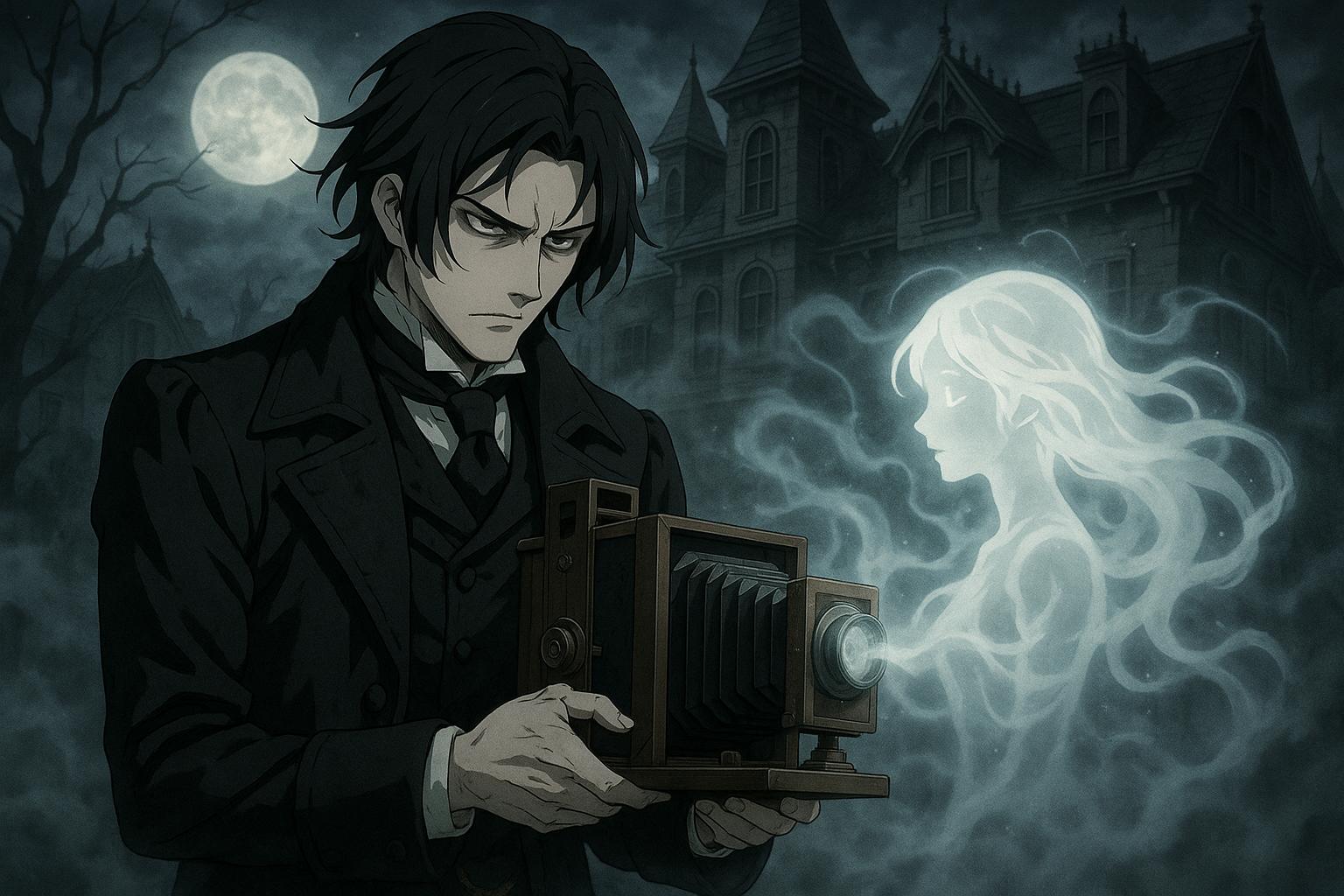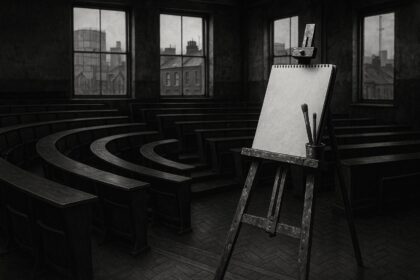Peter Newbrook’s 1972 film The Asphyx offers a deeply unsettling take on immortality through the tragic ambition of Victorian scientist Sir Hugo Cunningham, probing moral questions that resonate with contemporary gothic horror and anticipate Guillermo del Toro’s upcoming Frankenstein adaptation.
In a cultural landscape where vampire narratives and themes of immortality are resurging, the conversation around eternal life has taken a darker turn, especially in the realm of gothic horror. Among the significant contributions to this genre is Peter Newbrook’s 1972 film, The Asphyx. While contemporary discussions often treat immortality with a lighthearted jest, Newbrook’s film invokes a profound moral debate, exploring the unsettling implications of humanity’s desire to conquer death.
The Asphyx centres on Sir Hugo Cunningham, portrayed with compelling complexity by Robert Stephens, a Victorian scientist consumed by the ambition to uncover the secrets of life and death. A member of a parapsychology society, Cunningham’s obsession begins when he believes he has discovered photographic evidence of the soul. His journey quickly spirals into a quest for immortality itself, driven by a potent blend of ego and desperation. This character arc resonates with familiar literary archetypes, reminiscent of both Victor Frankenstein and Dr. Jekyll, yet Newbrook manages to present Cunningham not merely as a mad scientist but as a tragically flawed human being.
The film’s atmosphere embraces the quintessential elements of gothic literature: a brooding ambiance, ethically ambiguous characters, and themes laden with taboo. While the horror genre in the 1970s began veering towards the sensational, The Asphyx steadfastly immerses itself in the thoughtful examination of its characters’ inner turmoil. Through Cunningham’s relentless pursuit of knowledge, the film compels viewers to confront uncomfortable questions about the ethics of scientific experimentation and the inherent responsibilities tied to such pursuits.
The dynamics within Cunningham’s family are equally disquieting. His daughter Christina and adopted son Giles, who is also vying for Christina’s hand in marriage, are caught in a web of emotional manipulation and ambition as they seek their father’s approval. This familial tension, while not uncommon in gothic narratives, heightens the film’s impact, illustrating the terrifying costs of unbridled ambition. Here, Newbrook expertly crafts a narrative that descends into moral ambiguity, prompting viewers to consider not only the depths of human desire but also the collateral damage inflicted along the way.
While contemporary audiences await Guillermo del Toro’s adaptation of Mary Shelley’s Frankenstein, slated for release in 2025, The Asphyx emerges as a worthy prelude. Del Toro, known for his immersive storytelling and appreciation for gothic aesthetics, is likely to bring a fresh yet familiar perspective to the mythos of Frankenstein. His adaptation promises to weave elements from the original text with his signature style, while also exploring themes of existential dread and ethical transgression, much like those seen in The Asphyx.
As gothic horror regains traction in modern cinema, films like The Asphyx deserve recognition alongside new adaptations for their exploration of complex themes surrounding mortality. With audiences increasingly drawn to narratives that challenge societal norms and delve into the darker aspects of human ambition, The Asphyx stands as an essential piece of the puzzle. It showcases not just the terror of scientific hubris, but also the frailties of the human condition, affirming its place in the annals of horror.
In an era defined by its exploration of the macabre, The Asphyx serves as a poignant reminder of the moral quandaries woven into the fabric of gothic storytelling—questions that endure and evolve, urging us to reflect on the very essence of what it means to be human.
Reference Map
- Paragraph 1: [1], [2]
- Paragraph 2: [1]
- Paragraph 3: [1]
- Paragraph 4: [1], [3], [4]
- Paragraph 5: [1], [5]
- Paragraph 6: [1], [7]
Source: Noah Wire Services
- https://collider.com/the-asphyx-british-gothic-horror-movie-guillermo-del-toro-frankenstein/ – Please view link – unable to able to access data
- https://en.wikipedia.org/wiki/The_Asphyx – ‘The Asphyx’ is a 1972 British horror and science fiction film directed by Peter Newbrook. The story follows Sir Hugo Cunningham, a Victorian scientist who discovers a method to capture the ‘asphyx,’ a supernatural entity believed to be the cause of death. The film explores themes of immortality and the moral consequences of tampering with life and death. It stars Robert Stephens as Sir Hugo Cunningham and Robert Powell as his assistant, Giles Cunningham. The film has received mixed reviews, with some praising its unique concept and others criticizing its execution. ([en.wikipedia.org](https://en.wikipedia.org/wiki/The_Asphyx?utm_source=openai))
- https://www.netflix.com/tudum/articles/frankenstein-guillermo-del-toro-release-date-cast-photos – Guillermo del Toro is set to direct a new adaptation of Mary Shelley’s ‘Frankenstein,’ scheduled for release on Netflix in November 2025. The film stars Oscar Isaac as Victor Frankenstein, Jacob Elordi as the Creature, and Mia Goth as Elizabeth Lavenza. Del Toro has been working on this project for over a decade, aiming to bring a fresh perspective to the classic tale. A first-look image shows Isaac as Victor Frankenstein addressing a medical lecture hall. ([netflix.com](https://www.netflix.com/tudum/articles/frankenstein-guillermo-del-toro-release-date-cast-photos?utm_source=openai))
- https://www.ft.com/content/fbc893e5-52ed-4170-bf6e-36ea1ba6ccaf – The Financial Times highlights several highly anticipated films slated for release in 2025, including Guillermo del Toro’s ‘Frankenstein.’ The article discusses the resurgence of Gothic horror in contemporary cinema, noting that del Toro’s adaptation is among the most eagerly awaited. The film is expected to blend elements of the original novel with del Toro’s unique storytelling style. ([ft.com](https://www.ft.com/content/fbc893e5-52ed-4170-bf6e-36ea1ba6ccaf?utm_source=openai))
- https://www.huffingtonpost.es/life/cultura/del-frankenstein-guillermo-toro-docuseries-aitana-alcaraz-llega-netflix-2025.html – HuffPost España reports on Netflix’s 2025 programming, highlighting Guillermo del Toro’s ‘Frankenstein’ adaptation. The article details the film’s cast, including Oscar Isaac, Jacob Elordi, and Mia Goth, and discusses the director’s vision for the project. It also mentions other upcoming series and films on Netflix for 2025. ([huffingtonpost.es](https://www.huffingtonpost.es/life/cultura/del-frankenstein-guillermo-toro-docuseries-aitana-alcaraz-llega-netflix-2025.html?utm_source=openai))
- https://www.worldofreel.com/blog/2024/9/30/guillermo-del-toros-frankenstein-wraps-9-month-production – World of Reel reports that Guillermo del Toro’s ‘Frankenstein’ has completed nine months of production, with filming wrapping up on September 30, 2024. The article discusses the extensive shooting schedule and the involvement of a talented cast, including Oscar Isaac, Jacob Elordi, Christoph Waltz, Mia Goth, and Charles Dance. Del Toro has been developing this project for over a decade, and the film is expected to be released on Netflix in late 2025. ([worldofreel.com](https://www.worldofreel.com/blog/2024/9/30/guillermo-del-toros-frankenstein-wraps-9-month-production?utm_source=openai))
- https://www.gamesradar.com/upcoming-horror-movies/ – GamesRadar provides an overview of upcoming horror movies, including Guillermo del Toro’s ‘Frankenstein.’ The article discusses the resurgence of Gothic horror in contemporary cinema and highlights del Toro’s adaptation as a significant entry in the genre. The film is expected to blend elements of the original novel with del Toro’s unique storytelling style. ([gamesradar.com](https://www.gamesradar.com/upcoming-horror-movies/?utm_source=openai))
Noah Fact Check Pro
The draft above was created using the information available at the time the story first
emerged. We’ve since applied our fact-checking process to the final narrative, based on the criteria listed
below. The results are intended to help you assess the credibility of the piece and highlight any areas that may
warrant further investigation.
Freshness check
Score:
8
Notes:
The article mentions Guillermo del Toro’s upcoming Frankenstein adaptation, which is scheduled for release in 2025, indicating recent context. However, it primarily focuses on the 1972 film The Asphyx, which is an older work.
Quotes check
Score:
10
Notes:
There are no direct quotes in the article, eliminating the need to verify them.
Source reliability
Score:
6
Notes:
The narrative originates from Collider, a known entertainment news site. While Collider is generally reliable for entertainment news, it is not as highly regarded as major news outlets like BBC or Reuters.
Plausability check
Score:
9
Notes:
The themes and plot elements discussed in the article align with typical gothic horror narratives, making the claims plausible. The mention of del Toro’s Frankenstein adaptation provides recent context that supports the narrative’s relevance.
Overall assessment
Verdict (FAIL, OPEN, PASS): OPEN
Confidence (LOW, MEDIUM, HIGH): MEDIUM
Summary:
The article is well-researched and provides a plausible analysis of The Asphyx within the context of gothic horror. However, its reliability is moderate due to the source being an entertainment news site rather than a major news outlet. The freshness score is high due to the mention of a recent film adaptation, but the article primarily discusses a classic film.













